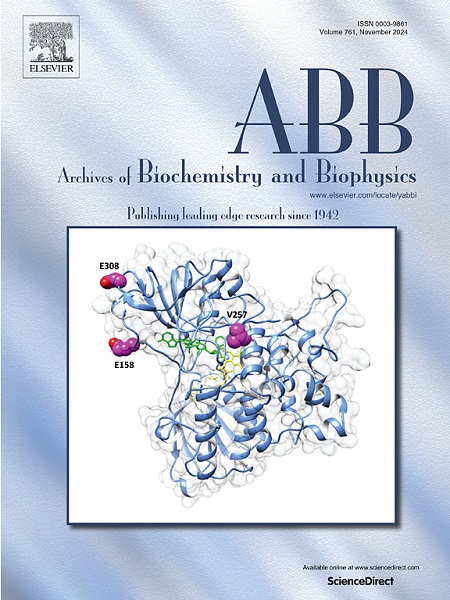PROTAC-attractive site as a new target for suppressing P-glycoprotein activity
IF 3.8
3区 生物学
Q2 BIOCHEMISTRY & MOLECULAR BIOLOGY
引用次数: 0
Abstract
P-glycoprotein (P-gp) plays an important role in the rapid release of various small molecule substances from the cell. In turn, inhibition of this efflux transporter is an attractive strategy for both overcoming chemoresistance and facilitating oral absorption of drugs or CNS drug delivery. In this work, we adopt an approach typical for PROteolysis Targeting Chimera (PROTAC), which is based on the artificial drawing together of the target protein to E3 ubiquitin ligase, to P-gp. Forced ubiquitinylation of a transmembrane protein will provoke its removal from the cell membrane and promote its subsequent degradation. Within this concept, we investigated the possibility of P-gp ubiquitinylation by a number of PROTAC-specific E3 ligases using several approaches. We also identified the most promising site for the development of P-gp ligands. By screening a diversified library of compounds, we not only identified a number of scaffolds suitable for the construction of specific ligands, but also proposed dorsomorphin as a convenient platform for creating the constituent of a bifunctional chimera. We show that dorsomorphin both has the structural characteristics necessary to develop a PROTAC-like molecule and exhibits P-gp inhibitory activity. In conclusion, the proposed approach is universal and can be applied to other transmembrane proteins associated with the pathogenesis of certain diseases.

protac吸引位点作为抑制p -糖蛋白活性的新靶点。
p -糖蛋白(P-gp)在细胞内各种小分子物质的快速释放中起着重要作用。反过来,抑制这种外排转运体是克服化疗耐药和促进药物口服吸收或中枢神经系统药物递送的一种有吸引力的策略。在这项工作中,我们采用了一种典型的靶向嵌合体蛋白水解(PROTAC)方法,该方法基于人工将靶蛋白与E3泛素连接酶结合到P-gp上。跨膜蛋白的强制泛素化将促使其从细胞膜上移除并促进其随后的降解。在这个概念中,我们使用几种方法研究了一些protac特异性E3连接酶使P-gp泛素化的可能性。我们还确定了最有希望开发P-gp配体的位点。通过筛选多样化的化合物库,我们不仅确定了一些适合构建特定配体的支架,而且还提出了dorsomorphin作为创建双功能嵌合体成分的便利平台。我们发现dorsomorphin既具有形成protac样分子所需的结构特征,又具有P-gp抑制活性。总之,所提出的方法是通用的,可以应用于与某些疾病发病机制相关的其他跨膜蛋白。
本文章由计算机程序翻译,如有差异,请以英文原文为准。
求助全文
约1分钟内获得全文
求助全文
来源期刊

Archives of biochemistry and biophysics
生物-生化与分子生物学
CiteScore
7.40
自引率
0.00%
发文量
245
审稿时长
26 days
期刊介绍:
Archives of Biochemistry and Biophysics publishes quality original articles and reviews in the developing areas of biochemistry and biophysics.
Research Areas Include:
• Enzyme and protein structure, function, regulation. Folding, turnover, and post-translational processing
• Biological oxidations, free radical reactions, redox signaling, oxygenases, P450 reactions
• Signal transduction, receptors, membrane transport, intracellular signals. Cellular and integrated metabolism.
 求助内容:
求助内容: 应助结果提醒方式:
应助结果提醒方式:


